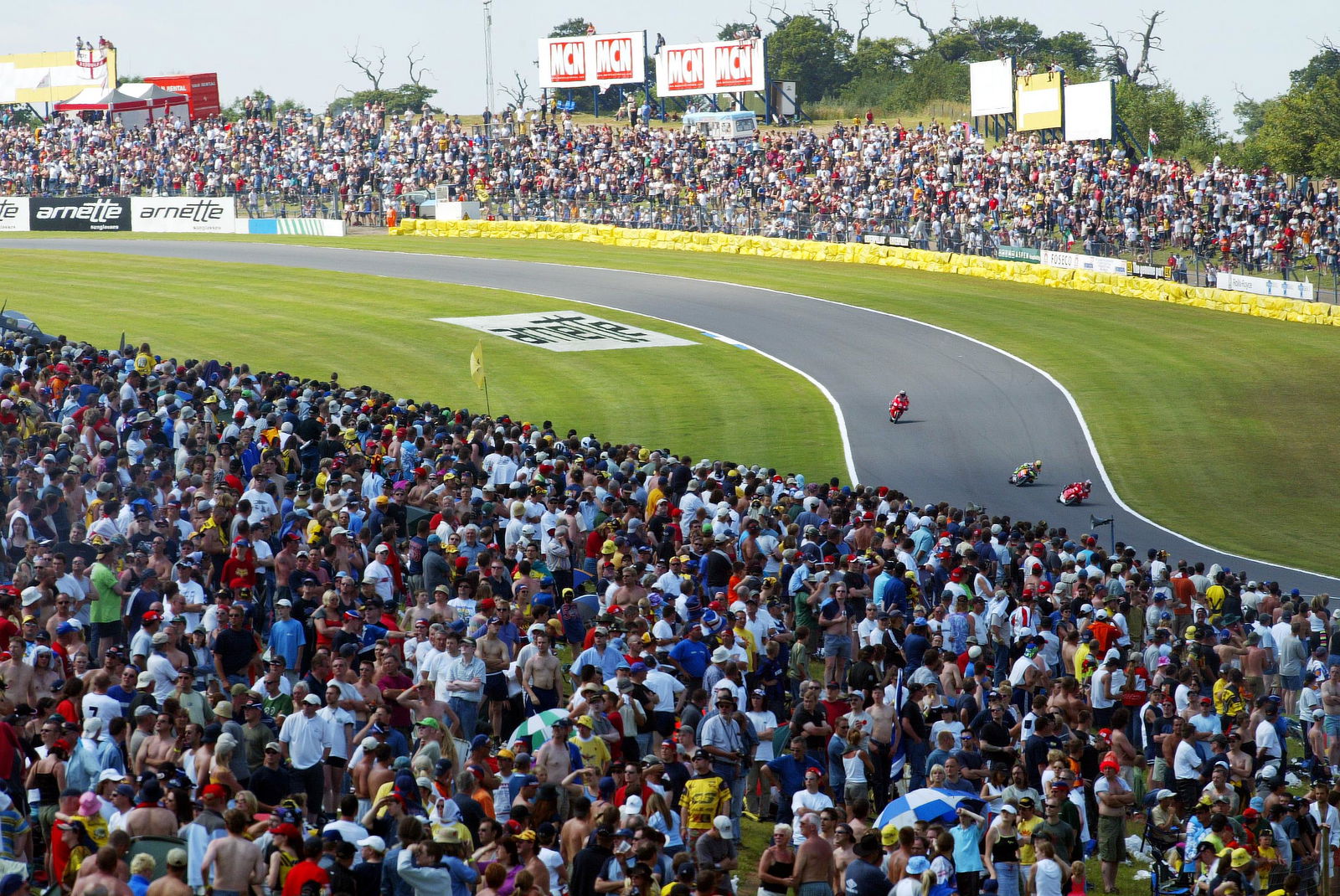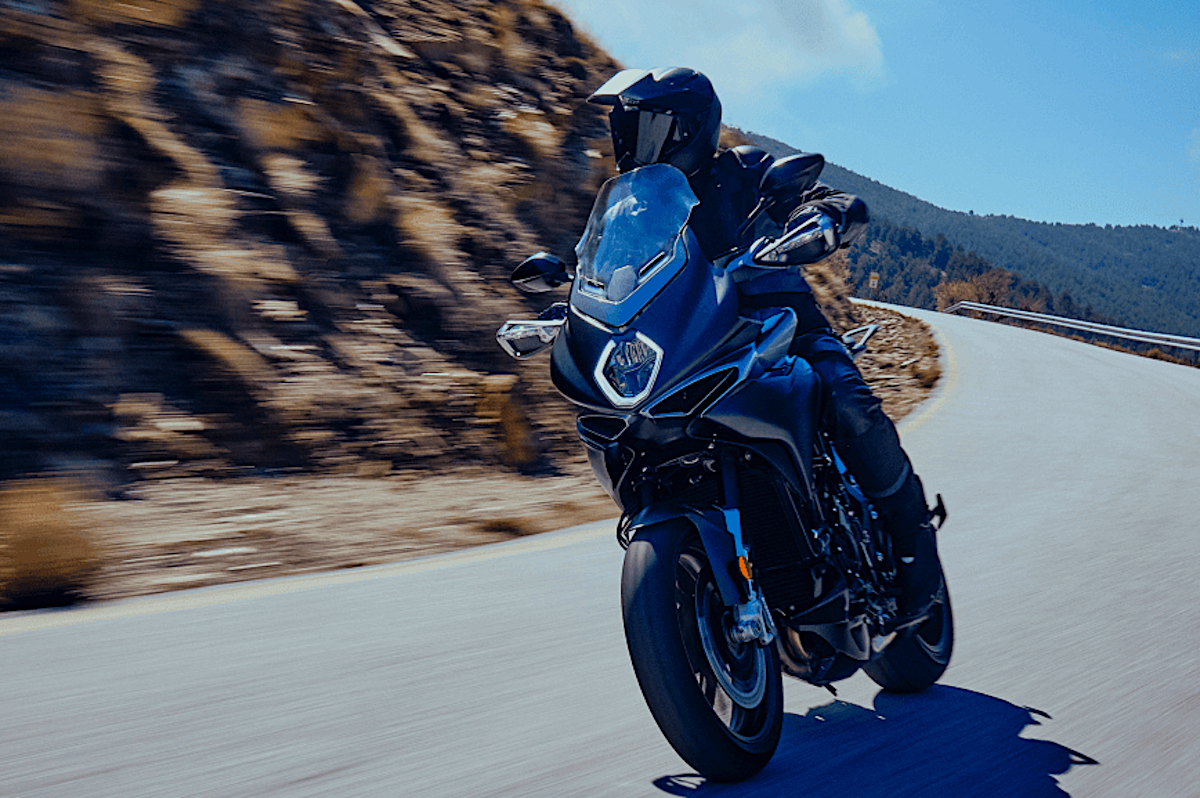No-to MotoGP | The MotoGP bikes that never saw the chequered flag
Sometimes a MotoGP project runs out of steam, money, enthusiasm, or all of the above! Here are some MotoGP racing motorcycles that you probably never even knew about!

THE world of MotoGP racing is a fickle place, where racers and teams battle with the people who hold the purse strings back at the factory. It's a kind of weird symbiotic relationship, where the racers need the factories and the equipment and backing they bring, while the factories need the exposure, to help them sell their road-going wares.
This tug of war can sometimes mean that bright, exciting racing projects get left by the wayside, either because the team have run out of talent, or the manufacturer has run out of money and patience!
With MotoGP being the top-rung of the global motorcycle racing ladder, it's really no surprise to learn that pretty much every big-name manufacturer on the planet has, at one time or another raced there. But what you might not know about are the amount of MotoGP projects that have sadly fallen by the wayside. That is the focus of this top-ten, the forgotten bikes and long-lost tech of the mothballed MotoGP bikes that never raced in anger.
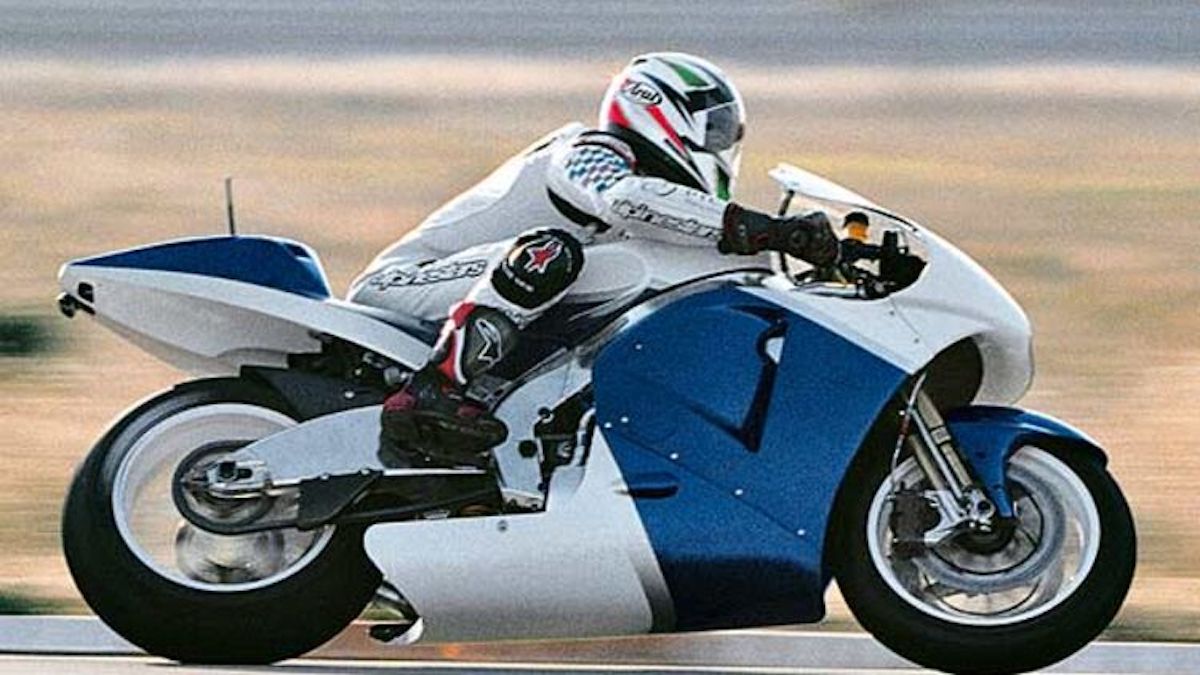
BMW 'M 800 RR' MotoGP
Number one on Dorna’s wish list of motorcycle manufacturers to join the big league, BMW has repeatedly turned down advances from Carmelo and co. to take the plunge over the last decade.
It’s a situation that doesn’t look like changing anytime soon, BMW instead preferring to market its flagship sportsbike - the M/S1000 RR - in the more like-for-like WorldSBK Championship. BMW hasn’t always shunned the notion of Grand Prix racing, however.
Indeed, back in the mid-noughties, BMW was seriously considering entering from 2007 when the series adopted new technical regulations that swapped 990cc bikes for 800cc machines.
However, entering a series as competitive high-profile as MotoGP presents numerous risks for a company like BMW if it couldn’t hit the ground running straight away. It also lacked racing pedigree and know-how, on two-wheels at least.

As such, BMW dragged its feet on committing to the championship while it considered whether there was more to lose than gain by entering.
Nevertheless, that didn’t stop BMW from going ahead and building a prototype - fronted by the most prominent nostrils you’ll ever see on a race bike - with Jeremy McWilliams and Luca Cadalora even testing it on track. Curiously though, it was reportedly powered by a 990cc triple-cylinder engine, despite the impending shift to 800cc.
Alas, the BMW project never made it to the grid. However, not all was lost, with the prototype going to be used as a test bed for what would become the BMW S1000 RR and the German firm’s WorldSBK effort.

Sauber Petronas GP1
The curious case of the Petronas FP1 has been well documented on many pages over the years… but how much do you know about the stillborn Sauber Petronas GP1 project?
Indeed, while the FP1 is still remembered for its modestly successful turn in WorldSBK between 2003 and 2006, the machine itself ultimately started life as a prospective MotoGP entry funded by Malaysian oil giants Petronas and built by Swiss F1 team Sauber, which is sponsored prominently.
However, while the Sauber Petronas GP1 was revealed to great fanfare at the 2001 Malaysian GP in readiness for a full-time 2002 MotoGP debut, the project hit the skids just weeks later when Sauber dropped out of the agreement, forcing Petronas can its GP plans.
Nevertheless, Petronas remained committed to finding an alternative solution and its faith rewarded when it hooked up with four-time WorldSBK Champion Carl Fogarty to create Foggy Petronas Racing with plans to adapt the GP1 into the FP1 superbike.
While the FP1 is probably the closest relation a WorldSBK machine will ever have to a GP bike, it didn’t translate to superior results with just two podiums to show for four seasons of competition.
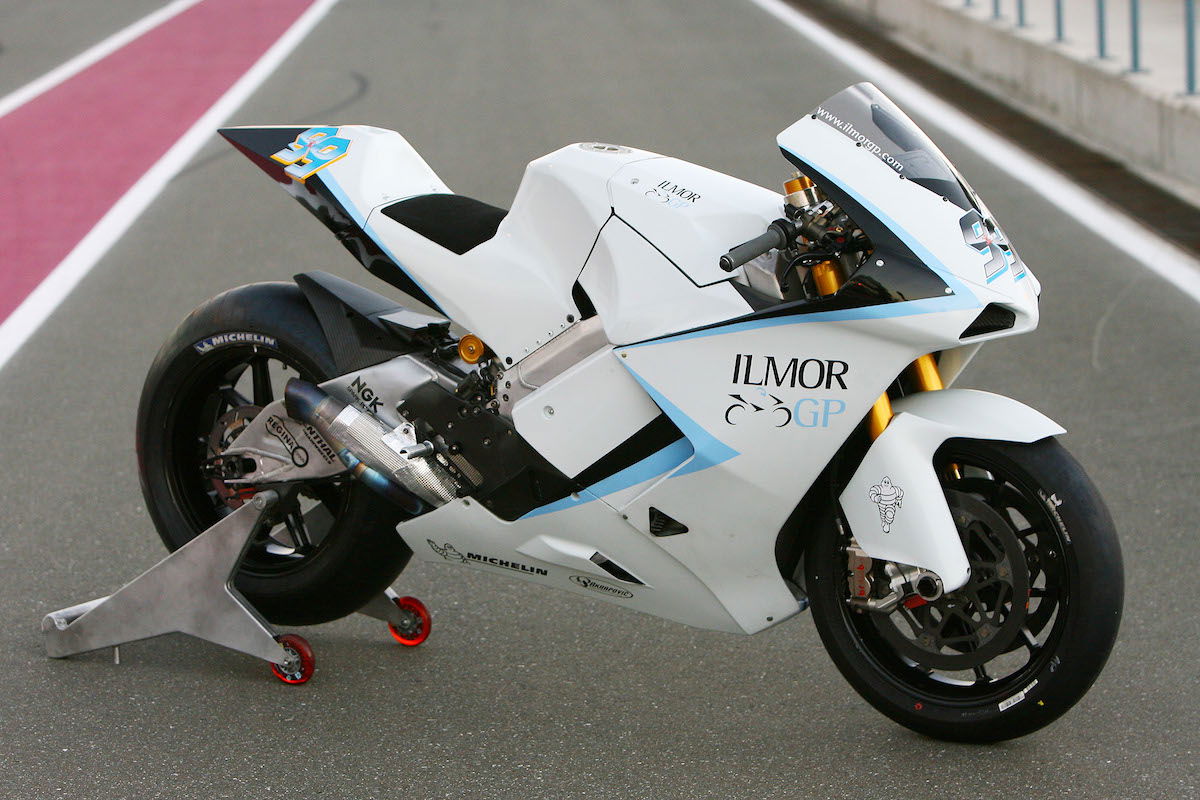
The Ilmor X3 MotoGP bike
OK, so being entirely accurate, it should be noted that the Ilmor X3 did actually make it onto the MotoGP grid… but with just three starts to its name, let’s just say it still would have had that ‘new motorcycle’ smell.
Launched in 2006, Ilmor came looking to utilise its wealth of experience competing across the four-wheel motorsport spectrum - including a competitive stint supplying F1 engines Lleyton House, Tyrrell and Sauber - to two wheels.
Joining forces with renowned motorcycle R&D expert Eskil Suter, the result was the Ilmor X3, an angular, not terribly sophisticated looking machine but it did feature a 800cc V4 90-degree engine built to a new regulation blueprint in readiness for the 2007 MotoGP season.
In isolation, it wasn’t a bad engine. Based on its sole like-for-like outing alongside other 800cc Grand Prix bikes in Qatar, Jeremy McWilliams’s top speed of 313km/h was very competitive. But what was quick in a straight line was less effective in the twisties.
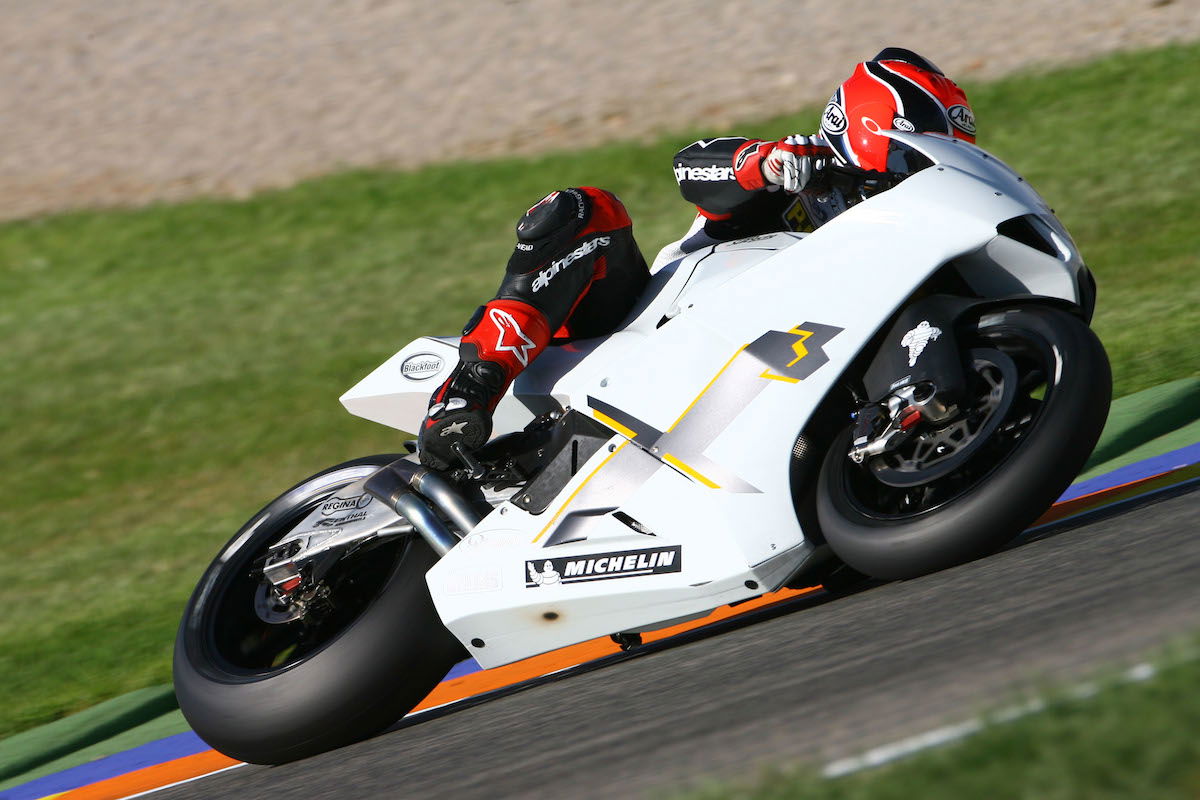
Indeed, while the X3 came brimming with F1-inspired technology, many of the innovations - designed with the purpose of keeping an F1 car glued to the track when cornering at speed - didn’t translate so effectively on a bike that needed a lean angle to corner.
Unlike most of the bikes on this rundown though, the Ilmor X3 project got as far as the grid, even receiving honour as first 800cc bikes to compete and score in GPs when Dorna allowed two wildcard outings in Estoril and Valencia at the end of the 2006 season, leading to a pair of 15th place results for Garry McCoy... albeit purely due to attrition for its rivals given it finished four and seven laps down.
However, while Ilmor might have gone into the winter encouraged by the nascent performance of the X3 it received a shock to the system at the 2007 opener in Qatar alongside new 800cc models from Ducati, Honda, Yamaha and co. when it qualified 4.6secs off pole.
Perhaps recognising that MotoGP success wasn’t anywhere near the horizon despite significant time and money put into developing the X3, Ilmor promptly announced it would be absent from the next events due to financial issues. It never returned.

The Yamaha YZR500 [Single-Crank] MotoGP bike
Other rivals may have come and gone over the decades but ultimately the pre-MotoGP era 500GP World Championship was forged on a fight for supremacy between Japan’s motorcycling powerhouses, Yamaha and Honda.
Coming into the final season of two-stroke 500GP competition - before the series transitioned into the four-stroke MotoGP era - Honda and Yamaha ranked neck-and-neck on ten titles each, making the swansong 500GP season a critical decider to bring honour to their respective houses.
However, though they were evenly matched statistically, in practice Honda had been the form team for some time having closed the margin established by Yamaha during the 70s and 80s with six titles from the last seven years.
It meant Yamaha felt compelled to throw money at a fresh philosophy for its 2001-spec YZR500 to get the edge back on Honda, even though it knew it would only get one season out of it.
The result was the development of a single-crank engine (instead of Yamaha’s signature twin-crank engine) which had been utilised to great effect by Honda. It was constructed on the advice of riders Max Biaggi and Carlos Checa, both of whom Yamaha had poached from Honda, after the pair believed it contributed to sweeter handling.
However, while Yamaha tested the new engine rigorously with Biaggi and Checa, it was left with an unclear picture as to whether it represented a marked improvement over the twin-crank version.
As a result, Yamaha played it safe by sticking to what it knew well but it didn’t stop it from being outclassed by Honda in 2001.

The Motoczysz C1 MotoGP bike
The name was hard to say, but the ambition in American motorcycle company Motoczysz - pronounced ‘moh-toh-chish’ - was very clear.
Founded by Hollywood architect and entrepreneur Michael Czysz, his Motoczysz company set sights on Grand Prix with the C1, a striking looking sportsbike that wasn’t designed to be subtle.
Packed with a MotoGP-targeted 990bhp engine that Motoczysz insisted was comparable with rival bikes in terms of power, the C1 was also notable for a series of innovative features that - at the very least - stirred curiosity.
Most significant was the C1’s patented counter rotating, twin crank, four-cylinder engine. Mounted along (rather than across) the frame - making the bike very narrow - the engine also has two cranks (turning in opposite directions) virtually eliminate gyroscopic and torque forces.
Other components of interest include a monoshock front suspension system - which features forks designed to flex during cornering, while retaining their stiffness during braking - plus a carbon fibre frame, a patent pending slipper clutch design and twin spring single-damper rear suspension.
The cooling system consists of twin front radiators plus an additional radiator above the rear wheel.
However, Motoczysz’s dreams of entering MotoGP would be dashed with confirmation of a shift to 800cc engine regulations from 2007, thus rendering the C1 obsolete.
Nonetheless, it lived on as an ultra exotic high-performance sportbike for the road, while it freed up Motoczysz to focus on making history at the Isle of Man TT with its electric TT Zero bike.

The (crazy) Drysdale V8 MotoGP bike
While Australia is well-known as the birthplace for several of its most successful GP racers, to date no constructor from ‘Down Under’ has built a bike capable of competing in MotoGP.
One - Drysdale Motorcycles - did, however, come surprisingly close…
The brainchild of Ian Drysdale, his eponymous company had been building exotic, quirky motorcycles for some years. Big, pumping engines were the firm’s calling card, as demonstrated by the beefy V8-engined Drysdale 750.
It was a unique selling point Drysdale wanted to take all the way to the upper echelons of motorsport with ambitions to not only enter ‘new’ MotoGP series in 2002 but do so with a V8 engine at its heart.
Pitched to prospective customers as the Drysdale V8 GP in the form of an (attractive) mock-up and short but confident sales advertisement, it read ‘with the experience gained from the design and fabrication of the Drysdale 750-V8road bikes – Drysdale is confident that the MotoGP 988-V8 will be a very competitive package’.
Alas, no-one took him up on his offer, leaving the Drysdale V8 GP dream as nothing more than a sketch.
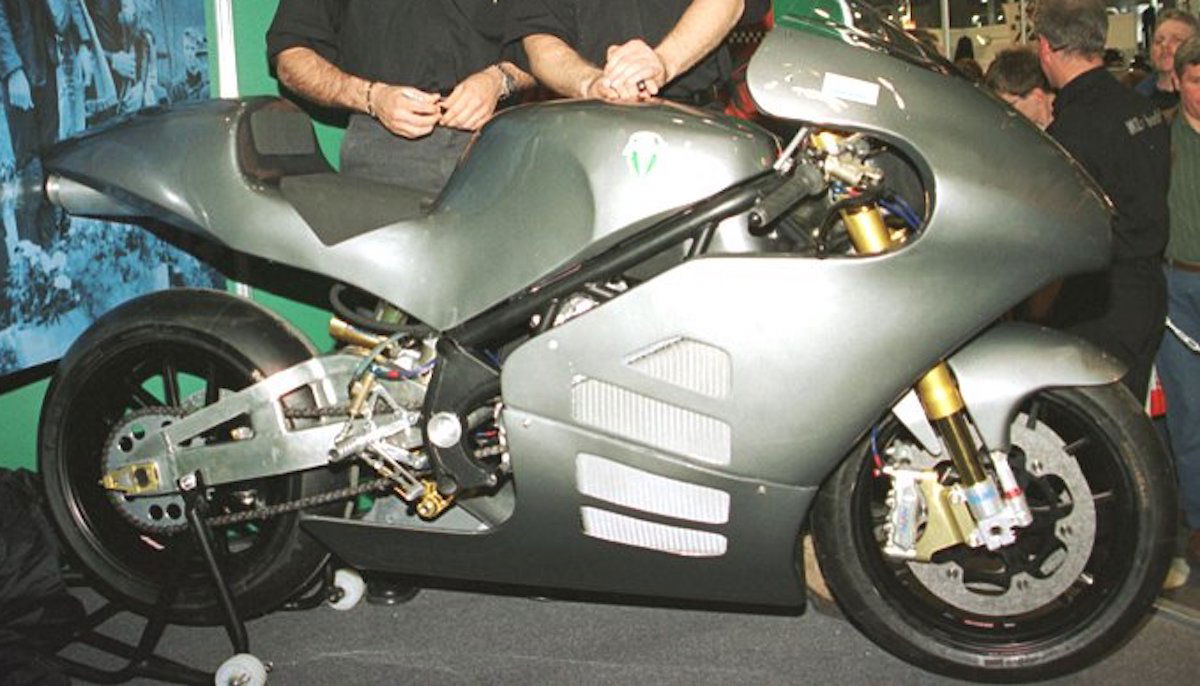
The MZ V4 MotoGP bike
Like Drysdale, iconic German brand MZ also attempted to make the most of MotoGP’s shift to 990cc four-stroke architecture in its bold attempt a return to international motorsport.
A prominent player during the early days of GP competition, MZ recorded 13 wins and 105 podiums between 1955 and 1976, a period during which it ranked as one of the world’s biggest motorcycle manufacturers.
However, come the turn of the Millennium, the company was on the cusp of turmoil in the face of dwindling sales and growing debt. Nevertheless, MZ saw MotoGP as an opportunity to drum up publicity and subsequently developed and built its own 990cc V4 bike
Revealing its prototype to the world in February 2002, MZ boasted 250bhp from the machine (though it was reported 220bhp elsewhere) and insisted it had been curated from painstaking windtunnel development.
Despite this, the MZ V4 - which was to be campaigned by Ralf Waldmann and Jose Luis Cardoso - didn’t turn a competitive wheel and was never seen again after its official launch.

The Blata V6 MotoGP bike
With four-strokes on their way in 2002 to form the new foundation of the incoming MotoGP era, so began the fraught process of manufacturers knuckling down in an attempt to get an edge on the competition.
Some of the wilder speculation to emerge in the paddock was the prospect of a super-powerful Honda V6. This of course never materialised - Honda instead settling on five-cylinders - but the notion of a V6 MotoGP machine wasn’t dismissed altogether.
Instead, Czech minimoto manufacturer Blata drew up plans to enter MotoGP in 2006 with a V6-powered bike developed in a collaboration with WCM, with whom it had been sponsoring in 2005.
However, despite fevered anticipation of its planned debut at the Czech MotoGP round, the Blata V6 never saw the light of day - with rumours suggesting it hadn’t even finished building a prototype - leaving WCM to run its old Yamaha-derived four-cylinder machine for what turned out to be its last season in the championship.
